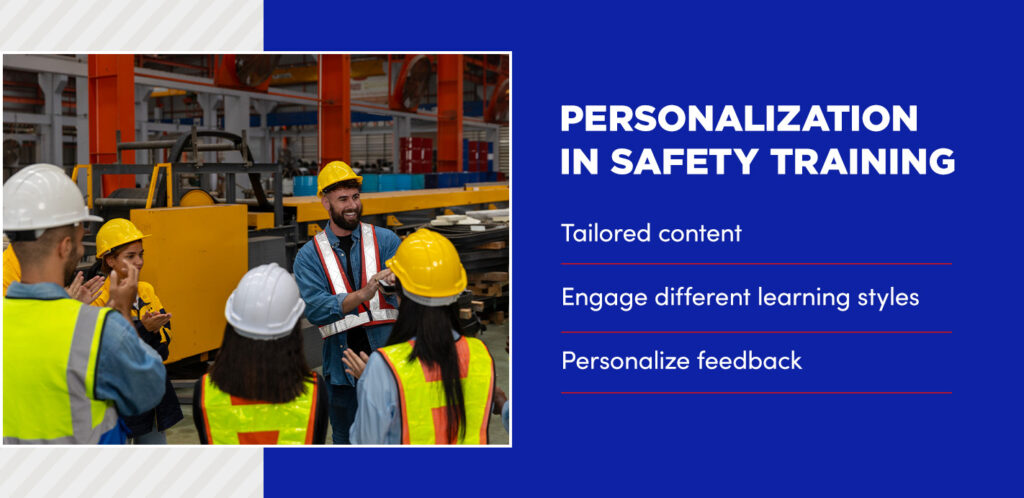7 Strategies for Engaging Employees in Safety

According to one study, engaged employees were five times less likely to be the cause of an incident. When implementing your employee safety training program, are your employees truly engaged? Holding safety training is a key duty for environmental health and safety (EHS) professionals. To increase employee engagement in safety training, you can leverage a few actionable strategies.
Why Is Employee Engagement Important for Safety?
Employee engagement is a buzzword in the business world, but what does it really mean? Employee engagement is essentially a measure of how invested employees are in the company, including its values, goals, and culture. It stands to follow that employees who are engaged will be more likely to invest energy in promoting causes that are important to the organization — this, of course, includes safety.
Promoting a culture of safety at work requires employee buy-in. Here’s why engaging employees with safety training is so important:
- Better safety outcomes: At the forefront of all safety goals is the health and well-being of workers. Engaged employees tend to be more proactive in their identification and reporting of hazards. Closer adherence to safety procedures can also reduce accidents and injuries on the job.
- Employee retention: Engagement reduces employee turnover and improves productivity, resulting in a cohesive team. Continually reviewing safety strategies ensures workers know you keep their safety top of mind.
- Improved communication and accountability: Acknowledging mistakes and missteps is essential. An engaged employee who recognizes the importance of your safety goals will be more likely to communicate their questions and concerns.
- Cost savings: Incidents that halt operations or force workers off the job can impact the organization’s bottom line.
- Legal compliance: In many industries, complying with safety guidance is legally required. Engaged employees ensure you meet regulatory safety compliance and help you avoid fines.
7 Ways to Engage Employees With Safety Training
Leverage the following strategies when engaging employees in safety:
1. Microlearning
While some employees may rejoice at the idea of a full day of learning, an eight-hour training day may seem a bit much for others. Microlearning is the practice of breaking down training into short, digestible bites. Rather than covering everything in one day, consider spreading the content across a week, with daily videos, infographics, and interactive quizzes.
Microlearning opportunities are great for refresher courses and training during the busy season when halting operations for a day isn’t feasible.
2. Peer-to-Peer Training
While safety professionals are in charge of employee safety training, it could be useful to get assistance from more senior members of the team. A new hire could review safety training content with their mentor to facilitate knowledge sharing and share best practices. This enhances collaboration and makes safety training part of the organization’s team building.
3. Personalization

Everyone learns differently, and while it might not be possible to tailor a whole safety training program to each individual employee, you can implement personalization in safety training in a few ways:
- Tailored content: Tailor training content to specific job roles and tasks — this makes the content extra applicable to workers in those roles, increasing the likelihood that they will pay closer attention.
- Engage different learning styles: Some people learn best by listening to an instructional video, while others may prefer hands-on activities. Integrate activities that accommodate these different learning styles in your training to engage all employees equally.
- Personalize feedback: You can engage employees by offering personalized feedback on their safety training assessments. Showing personal attention to participants reinforces important concepts and can build morale, particularly for employees who may struggle with traditional testing methods.
4. Real-Life Demonstrations
To illustrate safety concepts, consider using real-life stories and case studies. Demonstrate clear lessons learned and highlight how the organization shifted best practices to prevent a similar incident from occurring again.
If you have use of equipment and tools, you can stage real-life scenarios and use them to quiz employees on the right next steps. You can also conduct mock demonstrations using props in place of real equipment. For example, a large cardboard box could represent a forklift moving through the facility, allowing you to show how employees should navigate around them.
5. Integrated Technology
Safety professionals are beginning to integrate technology like virtual reality (VR) and augmented reality (AR) into training demonstrations. This technology allows you to simulate hazardous scenarios in a controlled setting — in this context, mistakes become a learning opportunity rather than a risk. VR technology creates an immersive experience that can engage employees more effectively.
In one study, 40% of learners reported increased confidence with the training material through the use of immersive VR technology.
6. Fun Activities
Fun, interactive learning opportunities capture employees’ attention and can even lead to better retention. Consider incorporating lighthearted games and activities, such as:
- Gamified training: This strategy involves using elements of gameplay — such as levels, scores, and badges — in training activities. Create a structure that allows employees to gain points as they move through different levels to incite their natural competitiveness. Gamification has been shown to improve employee performance in training activities.
- Trivia: A quick game of trivia is a fun, low-stakes way to gauge employees’ retention of training materials. Use a format like Jeopardy or Who Wants to be a Millionaire so it’s engaging and familiar.
- Safety scavenger hunt: To incorporate team building into your safety training, divide employees into small groups to search out safety-related items relevant to training. You can also take a series of photos with fake safety violations and have employees circle what’s wrong in each picture.
- Safety theater: Have a few volunteers act out a few safety scenarios — you can make it extra entertaining with fun costumes and props.
While having a fun safety training can be great, make sure the fun times don’t overshadow the important safety content.
7. Incentive Programs and Recognition
To keep employees continually engaged in your safety programming, recognize their efforts and reward them for their contributions to a safer work environment. You can personalize feedback and give positive reinforcement during training, and then continue to celebrate safety milestones and achievements.
Take a Certified Safety Manager Course
A Certified Safety Manager Course from the National Association of Safety Professionals (NASP) will equip you with the knowledge and skills to manage safety programs and train employees in various business environments. Earning a certificate through this course demonstrates to regulators and employers that you are a knowledgeable and proficient safety professional.
Get in touch with our team to learn more, or view our other available courses.

Related Posts




